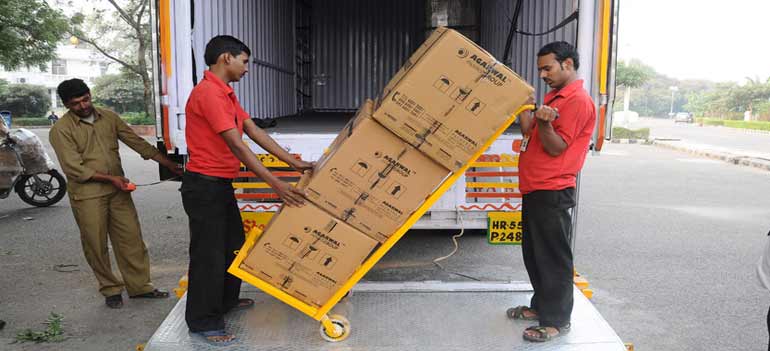
Loading and unloading are integral stages in the process of transporting goods, whether it's during a residential move, commercial relocation, or the shipment of goods between locations. These tasks require careful planning, precision, and the right equipment to ensure the safe and efficient handling of items. In this article, we'll explore the significance of loading and unloading in various contexts.
Loading:
Loading refers to the process of placing goods onto a vehicle for transportation. This stage is critical as it sets the foundation for the safe transit of items from one location to another.
Here are key aspects of loading:
Efficient Space Utilization:
Loading involves strategically placing items within the transport vehicle to maximize space utilization. This requires skillful organization and arranging items in a way that minimizes the risk of damage during transit.
Proper Packaging:
Before loading, items need to be appropriately packaged to prevent damage. This includes using sturdy boxes, securing fragile items with padding, and ensuring that all items are adequately protected for the journey.
Securing the Load:
Items must be securely fastened within the transport vehicle to prevent shifting during transit. Straps, ties, and padding may be used to ensure that items remain in place, reducing the risk of damage.
Weight Distribution:
Proper weight distribution is crucial for the stability and safety of the transport vehicle. Loading should be done in a way that balances the weight evenly, preventing the vehicle from becoming top-heavy or unsteady.
Loading Equipment:
Depending on the nature of the items, loading may require specialized equipment such as dollies, ramps, or forklifts. This equipment facilitates the safe and efficient movement of heavy or bulky items onto the transport vehicle.
Unloading:
Unloading is the process of removing items from the transport vehicle upon reaching the destination. It is as crucial as loading, ensuring that items are handled carefully and efficiently:
Systematic Unloading:
Unloading should be done systematically, considering the order in which items were loaded. This systematic approach makes it easier to locate and deliver items to their designated places at the destination.
Safety Precautions:
Safety is paramount during unloading. The team involved in unloading should be aware of proper lifting techniques, wear appropriate safety gear, and take precautions to avoid injuries or damage to items.
Timely Unloading:
Timely unloading is essential to prevent unnecessary delays and ensure the efficient flow of the overall transportation process. It also helps in freeing up the transport vehicle for subsequent assignments.
Careful Handling:
Each item must be carefully handled during unloading to avoid damage. Fragile or sensitive items should receive extra attention, and proper protocols should be followed to ensure the safe removal of items from the vehicle.
Unloading Equipment:
Similar to loading, unloading may require specific equipment to facilitate the process. This can include dollies, pallet jacks, or conveyor belts, depending on the nature of the items and the available infrastructure at the destination.
Professional Loading and Unloading Services:
For many individuals and businesses, the complexity of loading and unloading necessitates the assistance of professional moving or logistics services. These services bring expertise, trained personnel, and the right equipment to ensure a seamless loading and unloading process. Professionals understand the importance of careful handling, proper weight distribution, and efficient space utilization.

